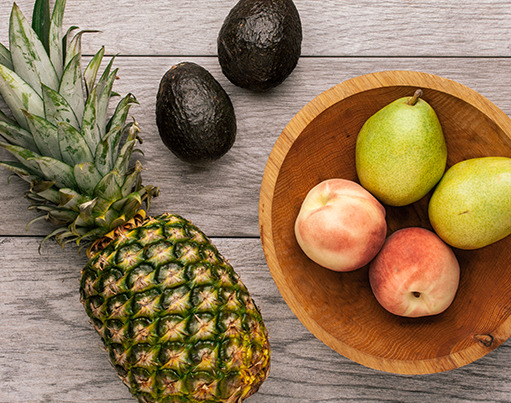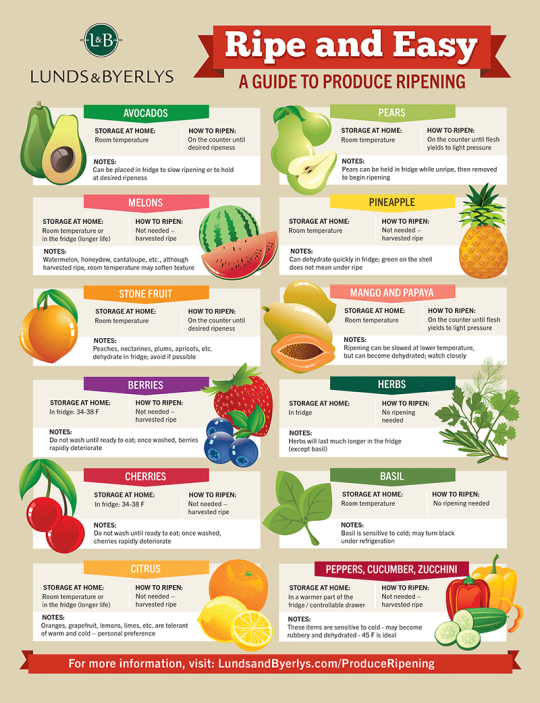
Colin Lyons, produce buyer, explains the best way to ripen your produce.
The produce questions I’m most often asked pertain to selection and ripeness. Everyone wants the produce they select to be the finest available and conditioned to the perfect texture and flavor. We strive to fulfill that desire for top produce on our shelves every day.
Items like bananas and avocados are personally monitored by our quality control inspector to ensure you have produce that is ripe when you need it to be. We stand behind our food with the expectation that your shopping and eating experience will be delightful every time.
In produce, many items have different sensitivities to hot, cold, moisture or dehydration. Here are a few general rules to follow from the store shelf to the plate that will lead you to a delightful end result.
Selection
There is one rule when it comes to selection that I like to tell people to look for: always buy the heaviest weight by volume. Let me explain. Let’s say you have two oranges, one in each hand. As far as you can tell, these oranges have the exact same size and shape; the best orange is typically the heavier one. Dehydration is one of the biggest enemies of produce and will almost always leave you disappointed. When you select fruits and vegetables that feel heavy, it is a testament to their freshness and juiciness.
This does not mean that you have to pick up every orange on the display, but each of us knows what an orange will feel like when we pick it up. If something is heavier than you expect it to be, I think you will be pleased. Keep this in the back of your mind as you shop – you will know after picking up one or two which one is for you!
Storage in the Home
For the most part, we all know those items that should be kept under refrigeration. Most green produce that you find on the fresh, cold rack at the store needs a similar environment in your home. It is best to move these things directly to the fridge when you get home. It is also very important that once something is cut, it should always be stored in the fridge until it is consumed. For those less obvious items or even those items that are debatable (contentiously at times, I know from experience) I have put together a guide that should help you get the most out of your produce.

Ripening
As I stated before, we are constantly monitoring the ripeness of many of our fruits. The goal is to have produce that is ready to eat immediately after purchase. However, ripeness is often a matter of personal preference. Flavors and texture, for example, can vary drastically in different stages of ripeness. In the produce guide, you will find tips for your favorite fruits that ripen after harvest. I have also included some tips for slowing the ripening process. Generally, room temperature is the best ripening temperature in your home.
The paper bag method is also used by some people to trap ethylene gas, thus ripening the fruit faster. My only caution is that fruit can go from under ripe to way over ripe in a short amount of time without close monitoring. This is not a method I use in my home.
Washing
I generally follow one rule when it comes to washing my produce. If you can, wait until you are ready to eat! While washing produce is always recommended, if you wait to wash it just prior to eating, the life of the produce in your fridge or on your counter will be much longer. It is difficult to completely dry produce one it has been washed. This remaining water can cause premature skin breakdown and from there, decay and mold. This is especially true with soft fruits like berries, cherries, and peaches.
I am confident that following these simple steps will put better produce in your home and give it a longer life on your counter or in your fridge.
Still have questions? Never hesitate to ask our knowledgeable produce staff in your store!





